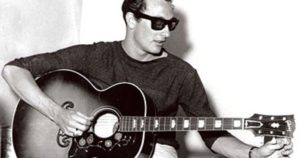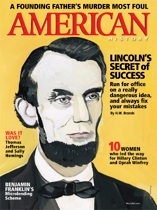Not Fade Away
Appeared in American History magazine, February 2009

Every night brought the same relentless dream. She went to sleep, knowing he waited, still her husband, forever young, with his life spread before him. Then she imagined it: what he saw and what he thought in those last moments.
A small charter plane crashed in a cornfield in the wee hours of Feb. 3, 1959, snuffing out three of rock ‘n’ roll’s brightest stars—Buddy Holly, Ritchie Valens and J.P. “The Big Bopper” Richardson. Their young pilot, Roger Peterson, was also killed.

It’s likely he and his passengers didn’t know what was happening until they saw the frozen Iowa tundra racing up at them through the windshield. This was the image that haunted Maria Elena Holly, Buddy’s widow. She was home in New York when the news came. Barely six months wed, she collapsed, losing the baby she was carrying.
The plane crash a half-century ago ended the first chapter of the world’s love affair with rock ’n’ roll, the music that blended the plaint of white country with the beat of black rhythm and blues. Few young artists were better at this chemical mixture than Holly, a gawky, bespectacled kid from Lubbock, Texas. He topped the charts with such hits as “That’ll Be the Day,” “Not Fade Away,” “Peggy Sue” and “Rave On.” He was 22.
Ritchie Valens, a pioneer of Latin rock from Southern California, had recently burst onto the scene with a double-sided smash: “Donna,” a slow-dancing/heavy petting number about a real-life girlfriend, paired with “La Bamba,” a Spanish-language romp. He was 17.
J.P. Richardson was a charismatic voice on Texas radio who’d christened himself “The Big Bopper” and parlayed that persona into the hit record “Chantilly Lace,” supposedly the Bopper’s end of a phone conversation with a sultry woman. He was 28.
The three rockers had come together for a Winter Dance Party tour of the upper Midwest. Each night, teenagers turned up at warm cocoon-like ballrooms to greet the stars who’d made the 400-mile trips between venues on a bus with no heater.
Two weeks into the tour, Buddy got fed up with shivering on the road and hatched a plan to charter a plane to take him and his bandmates, guitarist Tommy Allsup and bassist (and future country star) Waylon Jennings, from Clear Lake, Iowa, to Fargo, N.D. When the Bopper begged Jennings for his seat on the plane, Jennings, who was 19 and new to the road, was happy to oblige.
“Well, I hope your ol’ bus freezes up,” Buddy told Jennings.
“Well, I hope your ol’ plane crashes,” Jennings joked.
Ritchie and Allsup flipped a coin for the last seat, and when it landed in Ritchie’s favor, he said, “Hey—that’s the first thing I ever won.”
When the plane crashed just after takeoff, a generation that had danced and swooned to the sounds of early rock was left to wonder: If the best and the brightest are susceptible, then aren’t we all?
